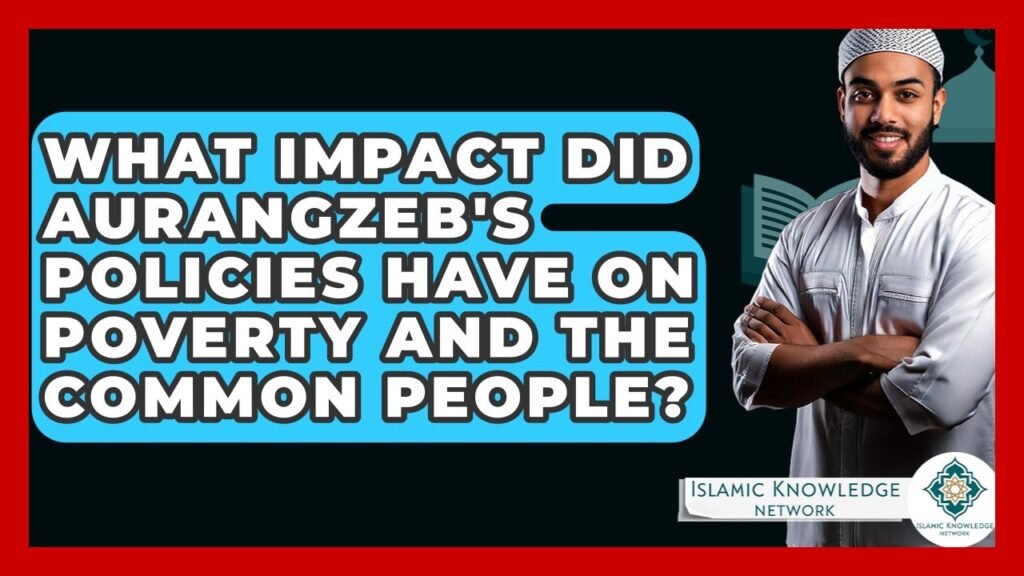You are here to read: How Did Aurangzeb’s Policies Impact Poverty and Common People? – A Thoughtfully Written Guide Offering Spiritual Wisdom and Travel Advice for Every Pilgrim who is going on holy journey of Hajj or Umrah.
Aurangzeb, the sixth Mughal emperor, reigned from 1658 to 1707 and is often seen as a controversial figure in Indian history. His policies significantly impacted the socio-economic landscape of his empire, particularly affecting the common people and contributing to widespread poverty. While Aurangzeb aimed to consolidate his rule through a strict enforcement of Islamic laws, his administration faced challenges in managing the diverse needs of a vast empire. This resulted in shifts that would reverberate through the fabric of society, compelling us to examine the extent and nature of poverty during his reign.
At Airlink Hajj and Umrah, we recognize the importance of historical context when exploring spiritual journeys today. As we provide you with the latest updates on Hajj and Umrah, understanding the historical influences of figures like Aurangzeb can enrich your perspective on the socio-economic conditions that many face, even in contemporary times. Our blog serves not only as a guide for your pilgrimage preparations but also as an avenue for deeper reflections on the interplay of history and modernity. Join us as we delve into Aurangzeb’s policies and their lasting impacts on poverty and the lives of the common people.
How Did Aurangzeb’s Policies Impact Poverty and Common People?
Aurangzeb, the sixth Mughal emperor, ruled from 1658 to 1707, and his policies had profound effects on the socio-economic landscape of India. His rigid Islamic orthodoxy and revivalist policies marked a significant shift from the relatively tolerant governance of his predecessors. The imposition of higher taxes, particularly the jizya tax on non-Muslims, increased the economic burden on the already struggling common people, amplifying poverty levels across the region.
Additionally, Aurangzeb’s focus on military expansion drained the empire’s coffers, leading to resource scarcity. These military campaigns diverted funds from essential public welfare programs, crippling infrastructure development and agricultural support. The rise in land revenue, coupled with strict regulations, drove many farmers into debt and forced them to relinquish their lands, worsening their plight and contributing to widespread famine in some areas.
Moreover, Aurangzeb’s policies often led to social discord, disrupting communities and exacerbating the struggles of the ordinary man. As we reflect on historical figures like Aurangzeb, it’s essential to remember that impacting various aspects of life can echo through time. For contemporary pilgrims, our blog at airlinkhajjandumrah.com provides the latest updates on Hajj and Umrah, helping you navigate today’s spiritual journey amidst historical contexts.
FAQ on How Did Aurangzeb’s Policies Impact Poverty and Common People?
-
What were the main policies of Aurangzeb that affected poverty?
Aurangzeb implemented strict taxation, land revenue systems, and a focus on military expansion, which often diverted resources away from public welfare and agriculture, exacerbating poverty among common people.You're at the middle of this awesome post at AirlinkHajjandUmrah.com through: How Did Aurangzeb’s Policies Impact Poverty and Common People?. Keep reading, it gets better!
-
How did Aurangzeb’s religious policies influence social dynamics and economic conditions?
His policies favored Islamic orthodoxy and imposed jizya tax on non-Muslims, which led to social unrest and economic strain among Hindu communities, impacting their livelihoods and contributing to increased poverty. -
Did Aurangzeb’s rule lead to any uprisings related to economic distress?
Yes, widespread dissatisfaction with heavy taxation and economic hardship led to several uprisings, including those by the Marathas and Sikhs, which further destabilized regions and affected the common populace.
-
What impact did Aurangzeb’s agricultural policies have on peasant communities?
Aurangzeb’s emphasis on revenue extraction often disregarded the needs of farmers, resulting in harsh conditions, reduced agricultural output, and increased debt among peasant communities, contributing to their impoverishment. - Were there any social welfare initiatives during Aurangzeb’s reign aimed at alleviating poverty?
Aurangzeb’s administration focused more on consolidating power than on social welfare, leading to a lack of initiatives that could effectively alleviate poverty or support the common people during his reign.
That wraps up How Did Aurangzeb’s Policies Impact Poverty and Common People?. Thanks for sticking with us till here! Share this: How Did Aurangzeb’s Policies Impact Poverty and Common People? with your friends.
Check our homepage at Air Link Hajj & Umrah for more awesome updates.
Some interesting posts are: 1: Umrah Mubarak, 2: When is Umrah closed 2026?, 3: When does Umrah start after Hajj 2026?
Mushu, an experienced Saudi Arabia traveler and writer, shares insightful tips and spiritual reflections to enhance Hajj and Umrah journeys for fellow pilgrims. He has been to Makkah and Madina from 2016 to 2023 many times and his posts will reflect this.







